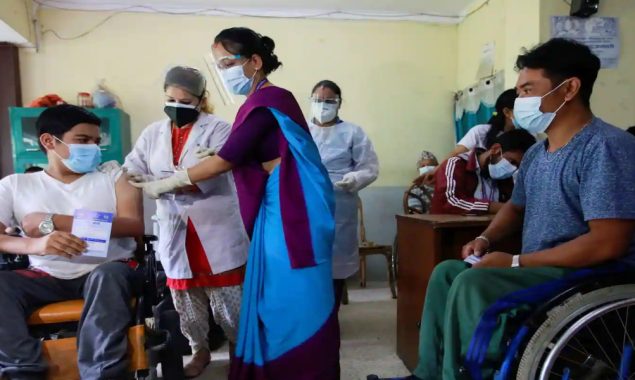
KATHMANDU – Major hospitals based in Kathmandu, Nepal’s capital, are seeing fewer people lining up to get tested for the coronavirus in the last few days, and the South Asian country has been reporting falling daily cases.
“Around 250 to 300 people are getting tested for coronavirus every day in the last few days,” said Dr. Prajwol Shrestha, deputy director at Bir Hospital, the largest hospital in Nepal now treating COVID-19 patients only. “As many as 500 people were tested in a day just a week ago.”
The Sukraraj Tropical and Infectious Disease Hospital also has fewer visitors coming for testing.
“We have not seen a rush of people queuing for PCR tests at our hospital over the last one week compared with the previous week,” said Dr. Sher Bahadur Pun, chief of the Clinical Research Unit at the hospital.
On Monday, Nepal reported 5,292 COVID-19 cases, a notable rise from 4,904 and 3,540 recorded on Saturday and on Sunday, but a sharp fall from 12,338 logged on Jan. 20, according to the Ministry of Health and Population.
However, doctors cautioned that it is not the right time to conclude that daily infections are on the wane.
“The latest trend shows that the infections are rising in some provinces while decreasing in other provinces,” said Dr. Hemanta Chandra Ojha, chief of the Zoonotic and Other Communicable Disease Control Section under the Health Ministry.
Read more: Nepal braces for 3rd wave of pandemic as COVID-19 cases surge
According to officials and doctors, one of the main reasons behind the decline in national aggregate cases is that people are not getting tested for the virus despite developing symptoms of common cold and fever.
“People have been heavily infected and are staying at home. Because of relatively less severe symptoms caused by the Omicron variant compared with Delta, people are staying at home for isolation without getting tested,” said Pun.
As a result, Pun did not expect the number of reported cases to rise significantly in the days to come. The Health Ministry had projected the COVID-19 cases in Nepal to peak in the first week of February before going downward.
“We still have to analyze the trend of the next few days to conclude if the cases in Nepal have already peaked,” said Shrestha. Enditem
Read More News On
Catch all the Health News, Breaking News Event and Latest News Updates on The BOL News
Download The BOL News App to get the Daily News Update & Follow us on Google News.




